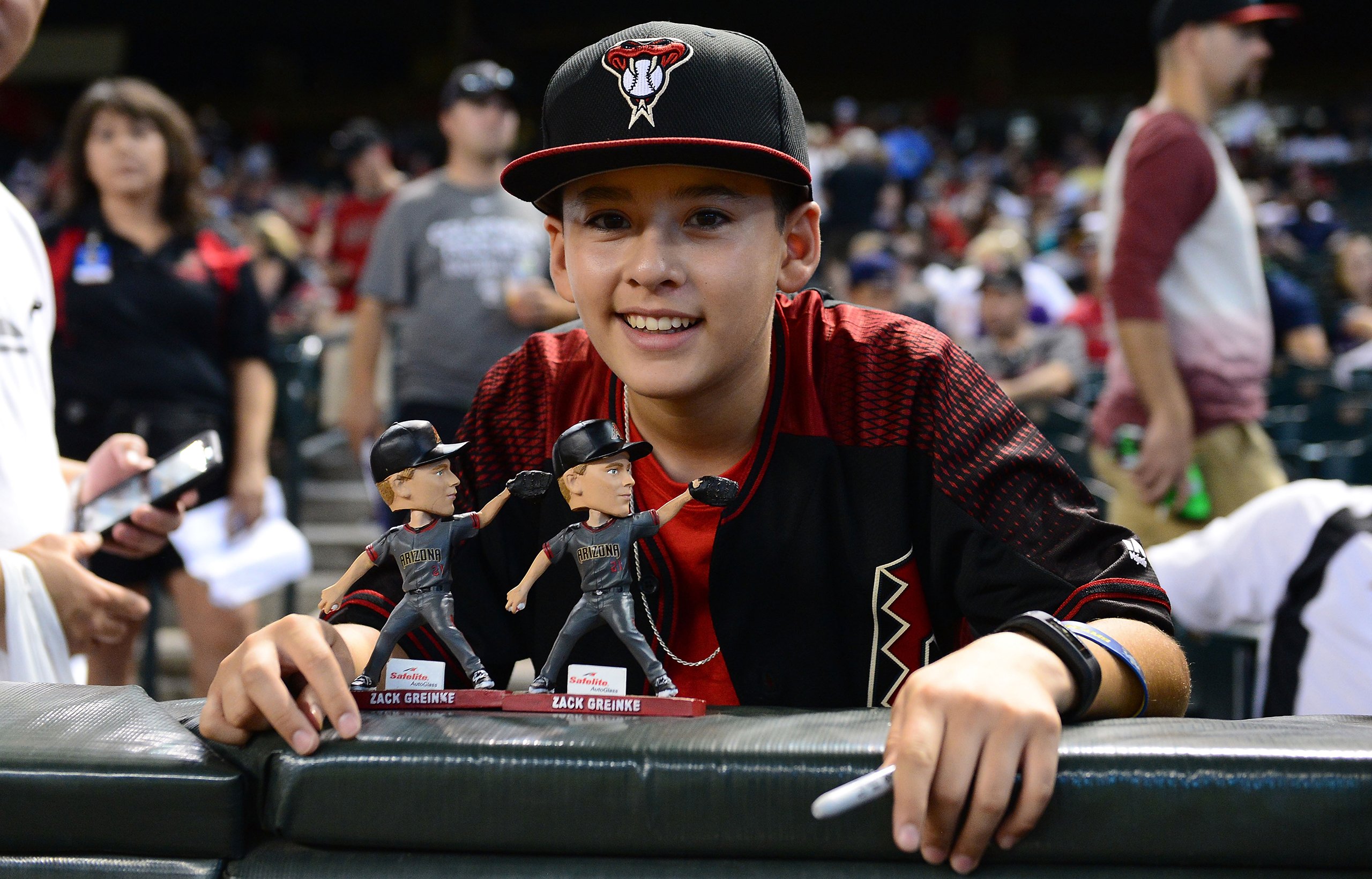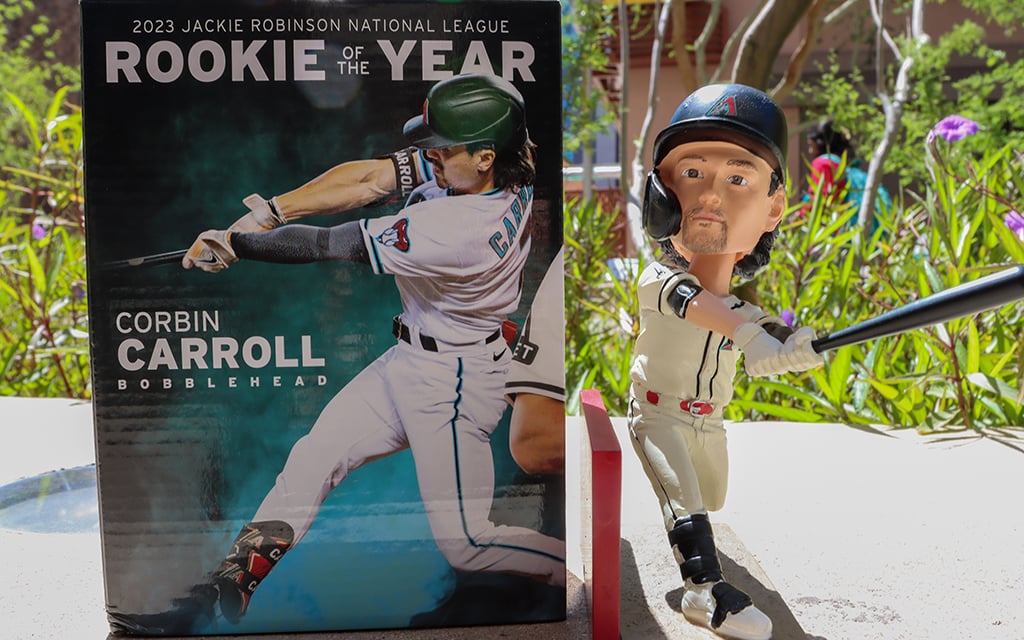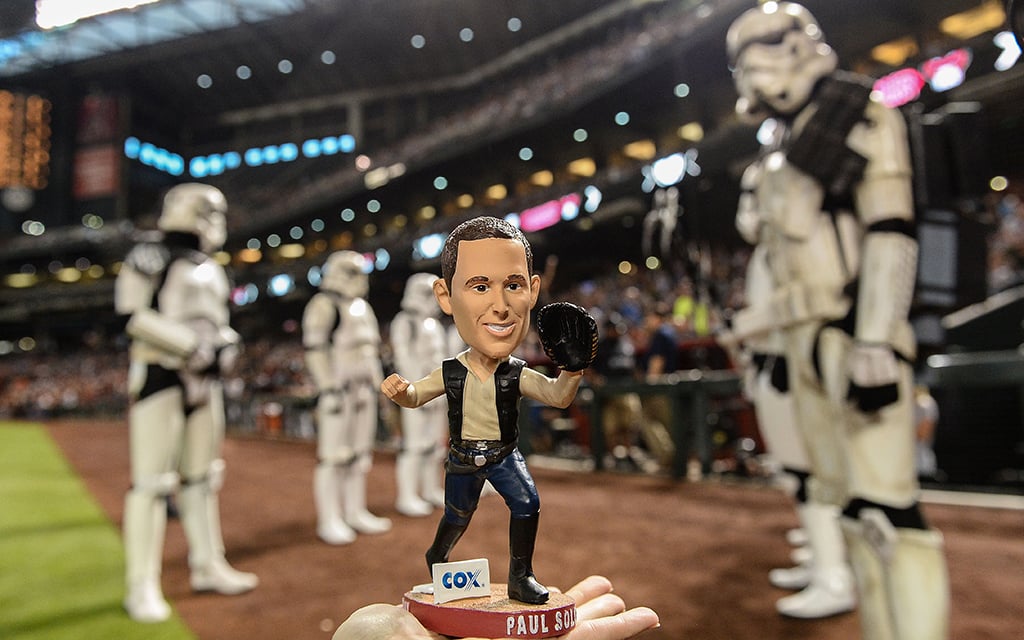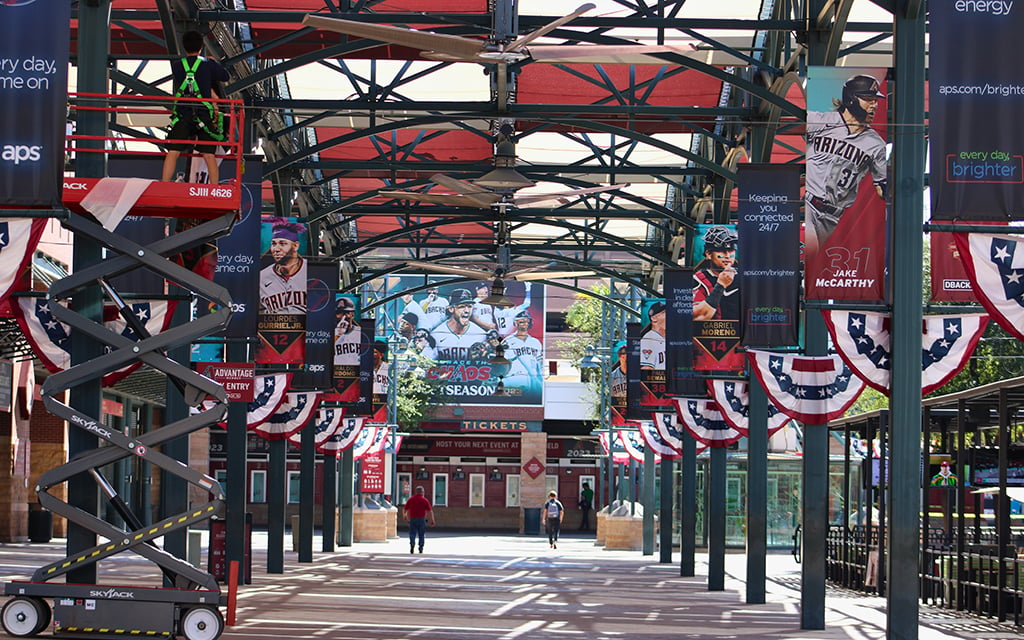The desire to acquire these bobbleheads has led to fans re-selling – even pre-selling – them online. Fans can go on eBay and pay to have someone go to the stadium and get them a bobblehead. Multiple listings can be found for Diamondbacks catcher Gabriel Moreno’s bobblehead to celebrate his first Gold Glove award, which will be given away Saturday.
Each guest – depending on the quantity available – gets one bobblehead when they enter the stadium, but it’s not uncommon to see people walking around the stadium with several. Sklar has developed a few different strategies to secure multiple bobbleheads at games.
To improve their collection, Sklar and his friend, Brad Novak, who is the other co-founder of the museum, simply ask people if they wanted theirs. They even offer money to kids and teenagers who may not care to keep the souvenirs.
“They (kids) were excited, we were happy and it was a win-win,” Sklar said.
Sklar and Novak got the idea to open the National Bobblehead Hall of Fame and Museum when Novak was working for the Rockford RiverHawks and he would bring home bobbleheads the team would give away. It then led to collecting more and more.
While the two had a passion for collecting sports memorabilia, they also recognized the value in bobbleheads. Once they opened the museum, they expanded to collecting pop culture and political bobbleheads, which led to a sizable collection. They even began making their own, starting with Special Olympian Michael Poll, a friend of theirs.
“We saw the value,” Sklar said. “You could go to a game and get a bobblehead with your ticket and the same bobblehead might be selling for $25, $50, $100 or even more.”
In order for demand to be high for the bobbleheads, however, the teams need players the fans are invested in. Hawkins said the reason the Diamondbacks produced no bobbleheads in 2022 was because of the lack of a solidified star, plus some supply chain issues.
The stars of today’s MLB once grew up idolizing their favorite players. The significance of getting a bobblehead night can vary depending on which player you ask, but for some, it’s a dream come true.
Maikel Garcia, infielder for the Kansas City Royals, dreamed of playing in the major leagues while growing up in Venezuela.The Royals are giving away 15,000 Garcia bobbleheads on July 20, the first time the young Venezuelan will be transformed into a bobblehead.
Garcia said he aspired as a kid to see all the fans line up for a mini version of him and was honored that the Royals chose him to be featured on a bobblehead.
“It’s a dream come true,” Garcia said. “When I was young I dreamed of that and I recognize how hard I’ve worked all my career and that’s a blessing.”
Hawkins said while players don’t usually have input on the design process, it’s still important to them. He said Carroll looked at his first bobblehead as a moment to know he’s really made it to the big stage. It’s also a special moment for the players’ families when they get a bobblehead night.
For Carroll’s second bobblehead on March 30, lines stretched all the way from the box office to Jefferson Street. It was a bustling scene outside Chase Field, and Hawkins and the Diamondbacks have heard from fans and expect that to be a trend moving forward.
“The fans want more and as they get to know the players we have more,” Hawkins said. “They’re happy that we’ve got four planned for this year. And we’ll see, but it always seems like ‘more is better.’”







